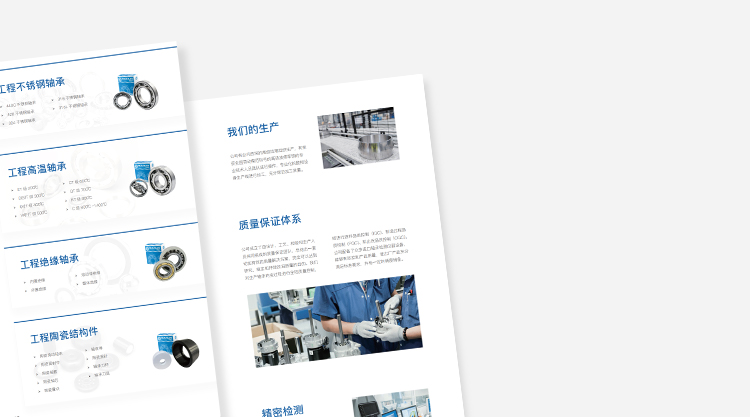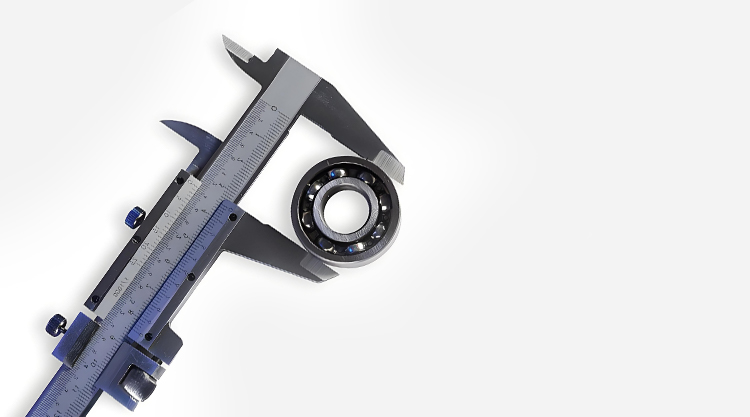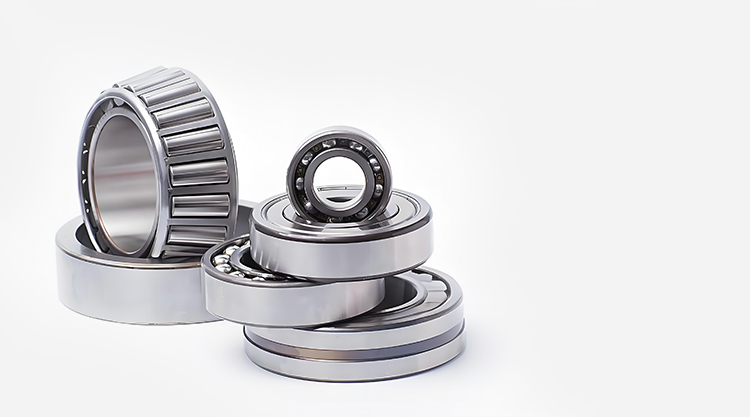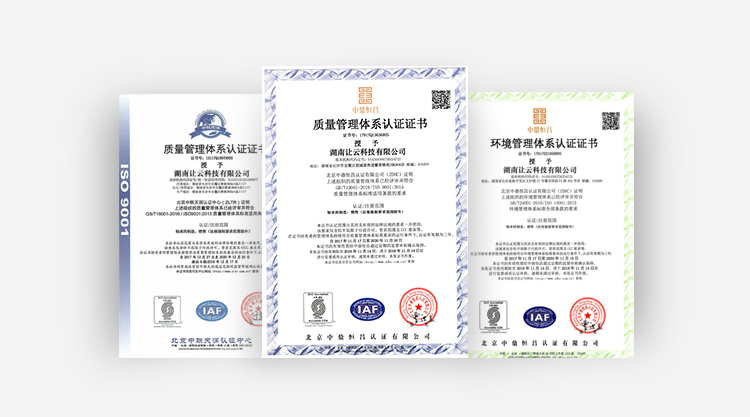Bearing Speed: Influencing Factors, Calculation Methods, and Speed Ranges for Differe
In industrial equipment operation, bearing speed is one of the core parameters determining equipment efficiency, lifespan, and safety. Whether it is motors, machine tools, or conveyor machinery, selecting a bearing speed that matches the operating conditions can prevent overheating and wear caused by excessive speed or production waste due to insufficient speed.
This article will discuss the factors influencing bearing speed, calculation methods, common bearing speed ranges, and usage precautions, providing practical references for professionals in the industrial field.
1. Key Factors Affecting Bearing Speed
Bearing speed is not a fixed value. Its actual operating limit is constrained by various operating conditions, and understanding these factors is the foundation of proper selection.
1.1 Bearing Type
Bearings with different structures have significantly different speed limits. Deep groove ball bearings typically have higher speeds than tapered roller bearings due to the smaller contact area and lower friction between the rolling elements and inner/outer rings; while thrust bearings, mainly bearing axial loads, have a much lower radial speed limit compared to radial bearings.
1.2 Lubrication Method and Lubricant
Lubrication is crucial for reducing bearing friction and controlling temperature. Bearings lubricated with grease typically have lower speeds than those lubricated with oil (e.g., oil bath, oil mist lubrication). If the viscosity of the lubricant is inappropriate (too high increases resistance, too low cannot form an oil film), it will directly reduce bearing speed or cause damage.
1.3 Installation Accuracy and Load
If the coaxiality deviation between the bearing inner and outer rings is large, or if the fit is too tight or too loose during installation, it will increase additional friction and limit the bearing speed. Additionally, the greater the radial or axial load, the more concentrated the force on the bearing rolling elements, further reducing the speed limit.
1.4 Working Temperature
During operation, the higher the bearing speed, the greater the heat generated. If the temperature exceeds the lubricant's tolerance limit (e.g., grease failure, metal thermal expansion), a vicious cycle will form, further limiting bearing speed and possibly causing seizure failures.
2. Bearing Speed Calculation Methods
In industrial settings, bearing speed calculation needs to combine the "basic rated speed" with the "actual operating condition correction" to ensure the result meets the equipment's operational requirements.
2.1 Clarify the Basic Rated Speed
Bearing manufacturers usually provide the "basic rated speed (n??)" in product manuals. This refers to the speed at which the bearing operates under rated dynamic load, achieving a lifespan of 1 million revolutions (in units of r/min). This is the basic reference value when selecting bearings. For example, the basic rated speed of a certain type of deep groove ball bearing may be 8000 r/min.
2.2 Adjust the Actual Speed Based on Load
The actual bearing speed should be adjusted based on the equipment's actual load, calculated as: Actual Speed (n) = Basic Rated Speed (n??) × Load Factor (f?). The load factor f? is determined by the ratio of "actual load (P) to rated dynamic load (C)." If P/C ≤ 0.1, f? is between 0.9 and 1.0; if P/C = 0.3, f? is between 0.6 and 0.7 (specific values depend on the bearing type and manufacturer's recommendations).
2.3 Consider Environmental and Lubrication Corrections
If the equipment operates in high temperatures (>120°C), dusty, or humid environments, or uses grease lubrication, an additional correction factor of 0.7–0.9 should be applied to avoid over-speeding the bearing and causing failures.
3. Reference Bearing Speed Ranges for Common Types
Due to structural design differences, bearings of different types have different speed limits suitable for various industrial applications. The following table shows the typical speed ranges of common bearings (based on grease lubrication, normal temperature, and light load conditions):
| Bearing Type | Typical Speed Range (r/min) | Suitable Application |
|---|---|---|
| Deep Groove Ball Bearing | 3000~15000 | Motors, water pumps, household appliances |
| Cylindrical Roller Bearing | 2000~12000 | Machine tool spindles, gearboxes |
| Angular Contact Ball Bearing | 4000~18000 | High-speed motors, precision machine tools |
| Tapered Roller Bearing | 1000~8000 | Automotive wheel hubs, crane gearboxes |
| Thrust Ball Bearing | 500~3000 | Elevator traction machines, vertical pumps |
Note: The above bearing speed ranges are for reference only. The actual speed must be adjusted based on the specific model, lubrication method, and load. It is recommended to follow the technical manual provided by the bearing manufacturer.
4. Precautions to Ensure Stable Bearing Speed
Proper maintenance can extend bearing lifespan and ensure the bearing speed remains within the designed range, reducing the risk of failure.
| Regularly Check Lubrication Status | Every 100–200 hours of operation, check whether the lubricant has deteriorated or leaked. Timely replenish or replace with the correct lubricant (e.g., low-viscosity oil for high-speed applications, high-viscosity grease for heavy-load conditions) to avoid bearing speed reduction due to insufficient lubrication. |
|---|---|
| Control Equipment Operating Temperature | Use cooling fans, oil cooling systems, or other methods to keep the bearing working temperature between -30°C and 120°C. For every 15°C rise in temperature, the bearing lifespan is approximately halved, which will directly limit the bearing speed limit. |
| Optimize Installation and Alignment Accuracy | During installation, use a dial indicator to check the coaxiality of the inner and outer rings of the bearing, ensuring the deviation is ≤0.05mm. The fit gaps between the shaft and the bearing inner ring, and between the bearing seat and outer ring, should meet design standards to avoid tight fits that limit bearing speed or loose fits that cause vibration. |
5. Conclusion
Bearing speed is a key indicator in equipment selection and maintenance. It is influenced by bearing type, lubrication, load, temperature, and other factors. By mastering the calculation methods for bearing speed, referring to the speed ranges of different bearing types, and performing daily maintenance, equipment operation efficiency and safety can be effectively improved. For industrial professionals, accurately matching bearing speed with actual operating conditions is crucial for ensuring stable production and reducing operational costs.
-
21 2025.10Eccentric Bearings: The “Eccentric Adjustment Experts” in Industrial Machinery
In industrial mechanical transmission systems, eccentric bearings serve as critical components for achieving shaft eccentricity adjustment and compensating for installation errors.
-
21 2025.10Comprehensive Guide to Industrial Bearing Lubrication: Method Selection
In mechanical transmission systems, bearing lubrication directly determines equipment lifespan and energy efficiency.
-
21 2025.10Mounted Bearings: A Complete Guide to Structure, Selection, and Application
Pillow block bearings, as bearing units that integrate rolling bearings with bearing housings, have become indispensable fundamental components in modern industrial equipment.
-
21 2025.10Low-Temperature Bearing Performance at -200°C Revealed
This article will delve into how cryogenic bearings maintain their performance under such extreme conditions.




